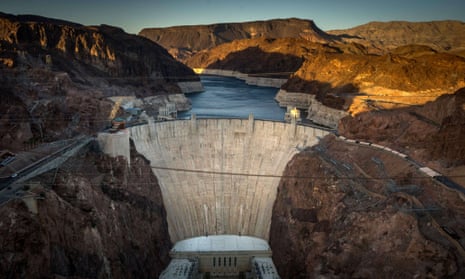According the US Geological Survey, we have a salt problem. A recent report from the scientific agency warns of a buildup of salinity by both manmade and natural causes in our lakes, streams and rivers. Fertilizer and stormwater runoffs and urban wastewater discharge are among the main sources for the increasing presence of ions such as sodium, sulfate, chloride and magnesium in the water. Drought has further increased the salt concentration. That spells trouble for the spectrum of industries that depend on clean water.
“Cities and companies are altering watersheds,” said Giulio Boccaletti, managing director of Nature Conservancy’s global freshwater program. “Businesses are increasingly aware that the problem of managing water is not just managing the efficiency of water use within their plants but also managing the watersheds.”
The USGS report is the first comprehensive look at the growing levels of salts in surface water across the country. About 71% of the salinity can be attributed to natural sources. But the remaining 29% are manmade, and about 49% of those come from compounds commonly used to remove snow and ice from roadways. Wastewater discharges from urban communities that contain a jumble of chemical products we use, from toothpaste to detergent, also contain salts that end up in the rivers. A third of the human contributions come from farms and pasture land.
Communities are having to adapt. The city of El Paso, Texas, has increasingly relied on water pumped from wells because water from the Rio Grande is getting too salty as a result of agricultural runoff and urbanization. But the groundwater is salty, too, and requires expensive desalination plants to make the water drinkable.
“As their infrastructure ages or the population grows, it’s often challenging in many communities to address” the salinity problem, said David Anning, a co-author of the USGS report. Desalination technology works well, he added, but is expensive and requires a lot of energy to operate.
The costs of desalination are passed on to companies in various ways. Even companies that don’t need to invest in their own water purification systems can see a jump in water bills if their local agencies need to spend more money monitoring, treating, and restoring salt-stricken watersheds.
A business prerogative
Large beverage makers such as Coca-Cola and PepsiCo, who depend on clean water for operations, have become more active in recent years to invest in watershed protection, often through partnerships with governments and nonprofits.
Last month, PepsiCo announced a plan to work with the Nature Conservancy to restore and protect habitats of five rivers in the country that supply water to over 35 million people in nine states. The nationwide effort will place more recycling bins for beverage containers at gas stations and convenient stores to encourage recycling. PepsiCo promises to donate up to $1m each year for five years to the Nature Conservancy for an increase in the beverage container recycling rate, which stands at 42%.
Coca-Cola is working with the US Department of Agriculture to restore creeks in different watersheds in the country in a five-year project announced last fall. Some of the creeks that undergo repairs supply water to Coca-Cola’s bottling plants.
Agribusiness has long struggled with growing salinity. Salt buildup in irrigation water costs $2.8bn in lost revenues in agriculture annually, most of which occurs in western states. Farmers typically get irrigation water directly from the source instead of from a water treatment plant. Some crops have low tolerance for salt, which stunts those plants’ growth and shrinks harvests.
Veronica Nigh, an economist with the American Farm Bureau, the largest general farming industry nonprofit in the US, said farmers and ranchers are increasingly employing a wide range of methods to reduce runoff and sediment buildup. Creating terraces, installing drip irrigation and building vegetation around fields can help prevent soil erosion and increased salinity.
New technologies to collect and analyze data have cropped up in recent years to help farmers deliver fertilizers more efficiently. The use of moisture and other sensors in the soil, combined with weather data, can tell growers how much water and fertilizers they should apply, when and in what parts of the field.
A variety of nonprofit organizations are welcoming the surge of businesses that want to help protect water quality at its source. The United Nations’ Water Action Hub matches up business, government and environment groups that want to work on water conservation projects, from watershed protection to public education campaigns. The Nature Conservancy runs Water Funds, a program that invites water agencies and businesses to contribute money for watershed conservation. The World Wildlife Fund and WaterAid offer similar initiatives.
Two-thirds of the world’s population is predicted to face water shortages by 2025. “We rely on the land and water to make our living,” Nigh said. “So it’s important for us to take good care of it and use technology to better utilize resources.”
The Water hub is funded by SABMiller. All content is editorially independent except for pieces labelled advertisement feature. Find out more here.

Comments (…)
Sign in or create your Guardian account to join the discussion